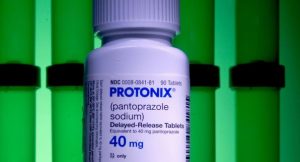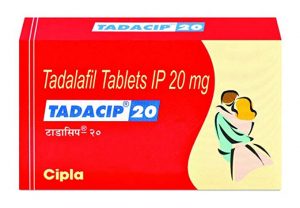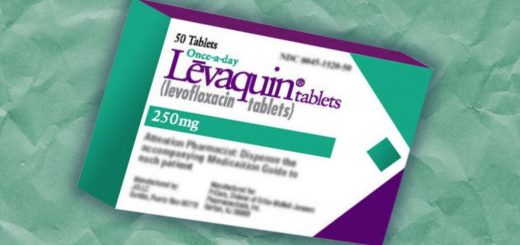Cordarone 200 mg

Buy Cordarone 200 mg 84 tablets $49.00. Cordarone (Amiodarone) 200 mg This medicine is an antiarrhythmic used to treat an irregular heartbeat and to maintain a normal heart rate.
Pharmacological properties:
antiarrhythmic agent of class III. The mechanism of action of amiodarone is due to blockade of ion channels of cell membranes of cardiomyocytes (mainly potassium, in a very small extent – calcium and sodium) as well as non-competitive inhibition of α-and β-adrenergic activity. As a means of class III antiarrhythmic (classification Vaughan Williams) increases the third phase of the action potential. Slows conduction in the sinoatrial, AV-node and the atria, especially at high heart rates. Does not alter intraventricular conduction. Increases the refractory period and reduces the excitability of the myocardium of atria, ventricles and AV-node.
Antianginal effect of the drug due to a decrease in myocardial oxygen demand (due to deceleration of heart rate and afterload reduction) and an increase in coronary blood flow due to a direct effect on smooth muscle of coronary arteries. Maintains cardiac output, reducing the pressure in the aorta and peripheral vascular resistance.
When i / in a maximum activity is achieved after 15 minutes and lasts up to 4 hours
After oral administration of amiodarone is absorbed slowly, the pharmacokinetics has considerable individual variations. Amiodarone has a very large and variable volume of distribution in connection with an extensive accumulation in various tissues (adipose tissue, rapidly perfused organs such as liver, lung and spleen). Oral bioavailability ranges from 30-80% (average 50%). After a single use maximum plasma concentration is achieved in 3-7 h. The therapeutic effect usually occurs within 1 week after initiation of therapy (from several days to 2 weeks). Amiodarone has a long half-life (20-100 days). In the first days of treatment the drug accumulates in almost all tissues, especially – in the fat. Elimination begins in a few days and sustained plasma concentration is achieved within one or a few months. Given the characteristics of the pharmacokinetics for a therapeutic effect requires the use of an initial saturating dose in order to achieve a drug accumulation in tissues. At 200 mg of amiodarone contains 75 mg of iodine, 6 mg of which is released as free iodine. Amiodarone is mainly excreted in the bile and feces. Urinary excretion of a minor, which allows you to assign the drug at normal doses in patients with renal insufficiency.
After the withdrawal of the drug excretion from the body it continues for several months, should take into account that after the drug its effect lasts for 10 days to 1 month.
INDICATIONS:

The prevention of recurrence of ventricular tachycardia or ventricular fibrillation, a risk to the patient’s life (starting treatment in the hospital), and leads to symptomatic disability documented ventricular tachycardia, supraventricular tachycardia documented in patients with heart disease, other rhythm disturbances, if the major antiarrhythmic drugs are ineffective or contraindicated; arrhythmias in WPW-syndrome.
Treatment of documented supraventricular tachycardia to control heart rate during atrial flutter or blink, especially in patients with coronary artery disease and / or functional left ventricular dysfunction.
Prevention of fatal arrhythmias in patients at increased risk of congestive heart failure or recent myocardial infarction with low ejection fraction or asymptomatic ventricular arrhythmia.
APPLICATION:
In / introduction of Cordarone is appointed, if necessary, quick effect, or if you can not oral ingestion. Cordarone may be administered only in isotonic (5%) solution of p-glucose. Must not be made isotonic preparation of p-rum sodium chloride may be formed as a precipitate. The contents of 2 vials of the drug should be diluted at least 500 ml solution of glucose. Do not mix with other drugs. Before the infusion of p-p Cordarone should be diluted in systems that do not contain 2-dietilgeksilftalat (eg PVC, polyethylene, polypropylene, glass), since p-p Cordarone can release 2-dietilgeksilftalat. Injected only into the central vein.
Loading dose in the i / v infusion is usually 5 mg / kg, and is entered only on the p-glucose solution for 20 min-2 h. The introduction can be repeated 2-3 times for 24 h. The infusion rate should be corrected taking into account the therapeutic effect.
The therapeutic effect of the drug is within the first minutes of administration and then gradually decreases after its completion, so the infusion should be maintained.
The maintenance dose is 10-20 mg / kg per day (an average of 600-800 mg / day, maximum dose – 1200 mg / day) in 250 ml solution of glucose in a few days. From the first day of infusion should begin the transition to oral treatment (3 tablets of 200 mg per day). If necessary the dose may be increased to 4-5 tablets per day.
For children aged 3 years and the recommended dose is 5 mg / kg. The drug can be used only under careful medical supervision.
Mode of the drug is determined individually.
Oral administration
Loading dose
Can be used by various schemes, usually starting dose is 600-1000 mg / day for 8-10 days.
Maintenance dose
It should use the minimum effective dose. Depending on the patient’s response to the drug maintenance dose ranges from 100 mg to 400 mg / day.
Since Cordarone has a very long half-life, it can take a day to 200 mg daily or 100 mg. You can take a break in receiving Cordarone, 2 times a week.
Contraindications:
sinus bradycardia (in the absence of correction of pacemaker), sick sinus syndrome (if no correction of pacemaker), sinoatrial block, AV-block and block bundle-branch block (without pacemaker), severe hypotension, vascular insufficiency, hyperthyroidism, Hypersensitivity to amiodarone or iodine, II-III trimester of pregnancy and lactation, the age of 3 years. Contraindicated concurrent use with drugs that can cause paroxysmal ventricular tachycardia of torsade de pointes.
SIDE EFFECTS:
bradycardia (generally moderate and dose-related), sometimes (when the sinus node dysfunction, elderly patients) – marked bradycardia and extremely rare – a cardiac arrest. Rarely observed conduction disturbances (sinoatrial block, atrioventricular block of varying degree). In some cases, there arrhythmogenic effect, in some cases – followed by cardiac arrest. There is currently no evidence whether this is due to use of the drug or related to the original heart disease, or lack of efficiency of therapy. These effects were recorded less frequently than with most other antiarrhythmic drugs, and observed mainly in the interaction with certain drugs or electrolyte imbalance.
Often mark the microcalcifications in the retina of the eye, usually in the area under the pupil, sometimes causing a feeling of mist or colored halo in the blinding light. Microcalcifications in the retina consist of complex layers of fat to disappear after drug withdrawal and do not require discontinuation of treatment.
In some cases, there neuropathy / optic neuritis, but their connection with taking Cordarone has not been established. Because the optic nerve neuropathy can lead to blindness, with the appearance of vagueness or decrease in visual acuity is recommended to conduct a full eye examination, including transillumination, and to reconsider the need for treatment of Cordarone.
Photosensitivity may occur, so patients should be warned that in the course of treatment to avoid insolation and UV irradiation. When radiation therapy may experience erythema.
In some cases there may be a rash on the skin, usually malospetsifichnaya, sometimes – exfoliative dermatitis. However, no proof of their causal connection with taking Cordarone.
Prolonged use of high doses may be a grayish or bluish skin pigmentation, and after cessation of treatment, this pigmentation fades slowly.
Due to the presence of iodine per molecule of the drug is frequently observed change in biochemical parameters characterizing the function of the thyroid gland – raising the level of T4 with normal or slightly reduced level of T3. In the absence of clinical signs of thyroid dysfunction drug withdrawal is not required. Chance of hypothyroidism, the clinical symptoms (usually mild), which can be weight gain, reduced activity, excessive compared to the expected effect of Cordarone bradycardia. Diagnosis is confirmed by increased levels of tireoidstimuliruyuschego hormone in blood serum. Euthyroid state is usually achieved within 1-3 months after cessation of treatment. In situations involving danger to life, treatment with Cordarone can be extended simultaneously with the appointment of levothyroxine, the dose is determined depending on the level of tireoidstimuliruyuschego hormone. Hyperthyroidism can celebrate during treatment and for several months after drug withdrawal. Clinical symptoms (usually mild) hyperthyroidism may include: weight loss, the appearance of arrhythmias, angina, congestive heart failure. Diagnosis is confirmed by a clear decline in tireoidstimuliruyuschego hormone in the blood serum. In this case, Cordarone should be abolished. Recovery usually occurs within several months after drug withdrawal, clinical recovery precedes normalization of biochemical parameters of thyroid function. In severe cases, which can result in death, requires emergency treatment. Depending on the specific clinical circumstances prescribed antithyroid drugs, corticosteroids, β-adrenoceptor blockers.
Isolated increased transaminase activity in serum at the beginning of treatment is usually moderately pronounced (1.5-3 times higher than the norm) are normalized after reduction of dose or spontaneously. In some cases there may be acute liver dysfunction with high serum transaminases and / or jaundice, requiring discontinuation of the drug (otherwise may lead to death). It can be observed psevdoalkogolny hepatitis, cirrhosis. Clinical symptoms and laboratory changes of parameters can be expressed minimally (hepatomegaly, transaminase activity increased in 1.5-5 times compared to the normal level). Therefore, in the course of treatment recommended regular monitoring of liver function. Severity of clinical and biochemical manifestations usually decrease after drug withdrawal, but is possible and fatal.
In some cases, may mark the pulmonary toxicity: alveolar / interstitial pneumonitis or fibrosis, pleuritis, bronchiolitis obliterans pneumonia, sometimes with fatal consequences.
In patients with developing dyspnea (load) as the isolation and deterioration of general condition (fatigue, weight loss, fever), should be X-ray of the chest.
Pulmonary disorders generally are reversible with early cancellation of Cordarone. Clinical symptoms usually disappear within 3-4 weeks, and then there is a slow recovery of the X-ray picture and lung function (in months). Therefore, you should reconsider the need for treatment of Cordarone and, if necessary appoint SCS.
In patients with severe respiratory disorders, especially in patients with asthma, in some cases may develop bronchospasm.
In some cases there may be acute respiratory distress syndrome in adults, sometimes fatal, most – immediately after surgery (possible incompatibility with a high concentration of oxygen).
Rarely can be observed peripheral sensorimotor neuropathy and / or myopathy, usually going after drug withdrawal.
May experience extrapyramidal tremor, cerebellar ataxia, rarely – benign intracranial hypertension (pseudotumor of the brain), nightmares.
Nausea, vomiting, dyspepsia, which usually mark the application of a saturating dose, and their severity is reduced at lower doses.
Can alopecia. In some cases there may be epididymitis, rarely – impotence. The relation of these side effects with Cordarone therapy is not established.
Rarely can be observed hypersensitivity reactions as vasculitis, renal involvement with an increase in serum creatinine, and thrombocytopenia. Very rarely there may be hemolytic or aplastic anemia.
When i / in a decrease in blood pressure may develop (usually moderate and reversible), with an overdose or too rapid introduction of the possibility of severe hypotension or collapse, hot flashes, sweating, nausea. Perhaps the development or worsening of arrhythmia.
PRECAUTIONS:
during treatment with Cordarone possible ECG changes – lengthening the interval Q-T (due to prolonged repolarization), the appearance of teeth U. These changes are not manifestations of toxicity.
Elderly patients in heart rate may decline more pronounced. The drug should be discontinued with the appearance of AV-block II-III degree sinoatrial block or block the beam Hiss.
Cases of dyspnea or nonproductive cough may be a manifestation of pulmonary toxicity.
Cordarone contains iodine and thus may affect the absorption of radioactive iodine.
Cordarone can cause thyroid dysfunction (see ADVERSE REACTIONS), especially in patients with impaired thyroid function (including family history). Therefore, before treatment, during treatment and after a few months after the end of treatment should conduct a careful clinical and laboratory monitoring. If you suspect a thyroid dysfunction should determine the level of tireoidstimuliruyuschego hormone in blood serum.
In the course of treatment recommended regular liver function tests (transaminase activity). Before treatment Kordaronomrekomenduetsya to ECG examination, determination of hormone and tireoidstimuliruyuschego potassium level in blood serum.
Side effects are usually dose-related drug, therefore caution should be exercised in determining the lowest effective maintenance dose.
Patients should be warned that they avoided during treatment with insolation and UV irradiation.
Safety and efficacy of amiodarone in children has not been studied.
Before surgery, requiring general anesthesia, the anesthesiologist should be made aware that a patient receives amiodarone.
No data on the impact of Cordarone on ability to drive and perform work that requires attention.
In view of the effects of the drug on the thyroid of the fetus contraindicated the use of Cordarone during pregnancy, except in special cases.
Amiodarone is excreted into breast milk in significant quantities, so it is contraindicated during lactation.
INTERACTION:
Cordarone is contraindicated concurrent use with drugs that can cause paroxysmal ventricular tachycardia of torsade de pointes:
- Class Ia antiarrhythmic drugs (quinidine, gidrohinidin, disopyramide);
- Class III antiarrhythmic drugs (sotalol, dofetilid, ibutilid);
- Bepridilom, cisapride, difemanilom, erythromycin for / in the introduction, mizolastinom, sparfloxacin, vincamine for / in the introduction;
- Sultopridom
Increased risk of ventricular arrhythmias, especially paroxysmal tachycardia type torsade de pointes, while the application of sparfloxacin in connection with the extension of Q-T interval on an electrocardiogram (additive electrophysiological effects).
We do not recommend combination therapy with the following medications:
- – Neuroleptics, can cause paroxysmal tachycardia such as torsade de pointes, some fenotiazinovymi neuroleptics (chlorpromazine, tsiamemazin, levomepromazine, thioridazine, trifluoperazine), benzamide (amisulpride, sulpiride, tiaprid), butyrophenones (droperidol, haloperidol), pimozide (increased risk of ventricular arrhythmias especially the type of paroxysmal tachycardia torsade de pointes);
- – Galofantrinom, moxifloxacin, pentamidine (increased risk of ventricular arrhythmias, especially paroxysmal tachycardia type torsade de pointes. If such a combination is inevitable, necessary preliminary control of Q-T interval and continuous ECG monitoring in the future);
- – Injectable form of diltiazem (risk of bradycardia and AV-block. If such a combination is necessary, requires careful monitoring of the patient and continuous ECG monitoring);
- – A-adrenergic blockers, sotalol and esmolol than (the risk of breach of automaticity, conduction and contractility of heart due to the suppression of sympathetic compensatory mechanisms).
Caution should be used in combination with Cordarone the following drugs:
Oral anticoagulants. In view of the increasing effect of oral anticoagulation and increased risk of bleeding should be more frequently to control the level of prothrombin in the blood and adjust the dose of oral anticoagulants during treatment with Cordarone and after drug withdrawal.
Cyclosporine. May increase cyclosporine levels in blood plasma that is associated with a decrease in its metabolism in the liver, which increases the nephrotoxicity of the drug. In this case, the necessary dose adjustment.
Forms of diltiazem for oral administration. The risk of bradycardia and AV-block, especially in elderly patients. Requires clinical and ECG monitoring.
Digitalis preparations. Possible violation of automatism (severe bradycardia) and AV-conduction. May increase the concentration of digoxin in the blood plasma (due to the decrease in its clearance). Should be conducted ECG studies, clinical and biochemical control (including, if necessary to determine the level of digoxin in the blood plasma), it may be necessary to change the doses of cardiac glycosides.
Esmolol. Possible violation of automaticity, conduction and contractility of the heart (inhibition of sympathetic compensatory mechanisms). Requires clinical and cardiographic monitoring of the patient.
Tools that can cause hypokalaemia:
- – Diuretics that cause hypokalaemia by themselves or in combination with other drugs;
- – The stimulative effect of laxatives;
- – Systemic corticosteroids (gluco-, mineral-) tetrakozaktid;
- – Amphotericin B (w / application).
Increased risk of ventricular arrhythmias, especially paroxysmal tachycardia type torsade de pointes (hypokalaemia is a predisposing factor). We recommend clinical and cardiographic monitoring of the patient, control the level of potassium in the blood serum.
Phenytoin. May increase levels of phenytoin in the blood plasma with symptoms of overdose (particularly neurological). Requires clinical monitoring and dose reduction of phenytoin when the signs of overdose, if possible – to determine the level of phenytoin in plasma.
Funds, causing bradycardia. Calcium channel blockers (diltiazem, verapamil), β-adrenergic blockers (except sotalol), clonidine, guanfacine, digitalis preparations, mefloquine, cholinesterase inhibitors (donepezil, galantamine, rivastigmine, tacrine, ambemony, pyridostigmine, neostigmine). Increased risk of ventricular arrhythmias, especially paroxysmal tachycardia type torsade de pointes. We recommend clinical and ECG monitoring.
Simvastin. Dose-dependent increased risk of side effects such as rhabdomyolysis (decrease metabolism of simvastatin in the liver). Simvastina dose should not exceed 20 mg per day. If you use a dose of a therapeutic effect can not be achieved, it is necessary to appoint another statin, which does not interact with Cordarone.
Tools for anesthesia. May experience potentially serious complications in patients undergoing general anesthesia: bradycardia, atropine is not correctable, hypotension, conduction disturbances, decreased cardiac output. Very rarely – severe respiratory complications, sometimes lethal (acute respiratory distress syndrome of adults). They usually occur immediately after surgery, possibly due to incompatibility with high concentrations of oxygen.
OVERDOSAGE:
Information regarding overdose Cordarone limited. In some cases, the observed sinus bradycardia, ventricular arrhythmia, tachycardia, torsade de pointes-type, liver damage, vascular insufficiency.
Given the pharmacokinetic profile of the drug are encouraged to monitor the patient for a long time (especially the control of cardiac activity). Treatment is symptomatic. Neither Cordarone nor its metabolites are not removed by dialysis.







